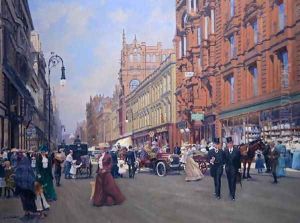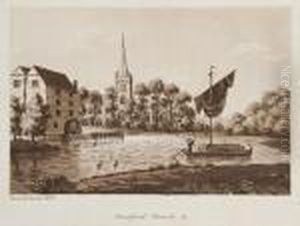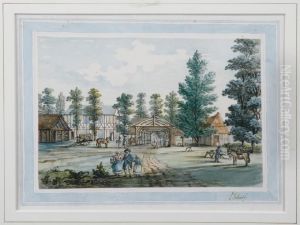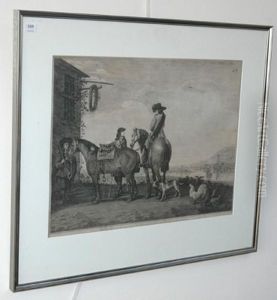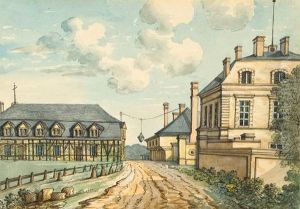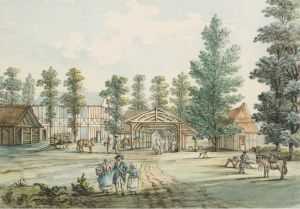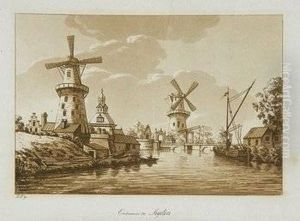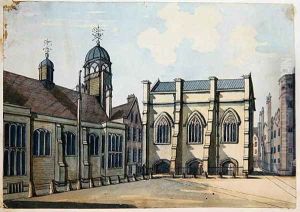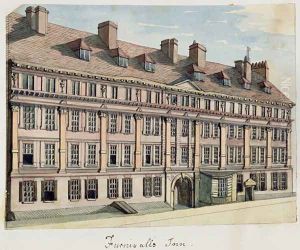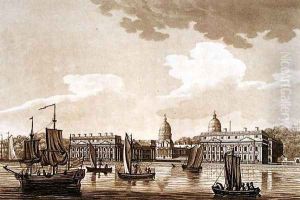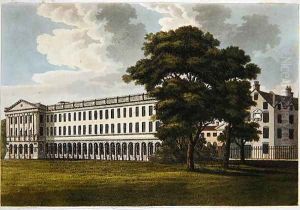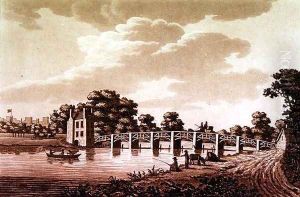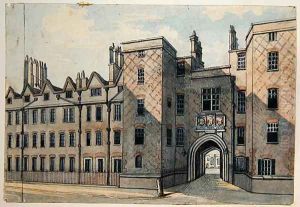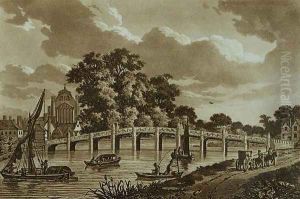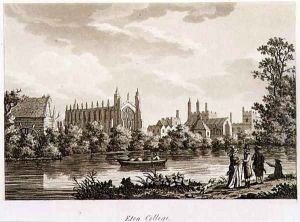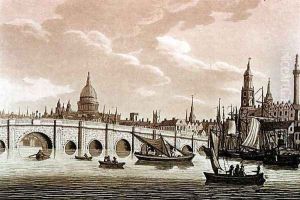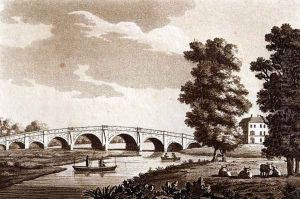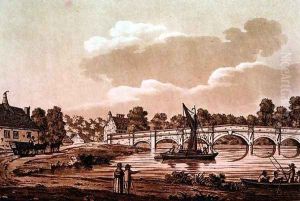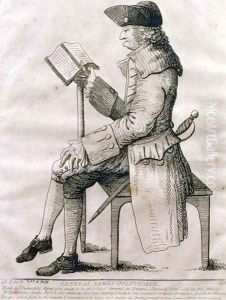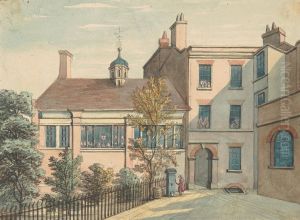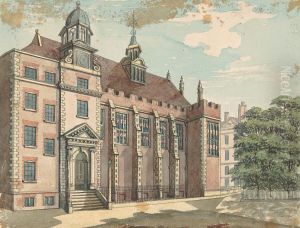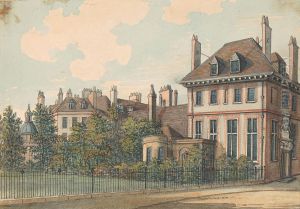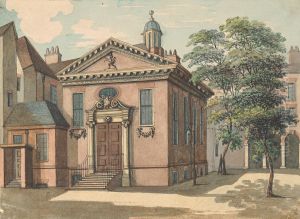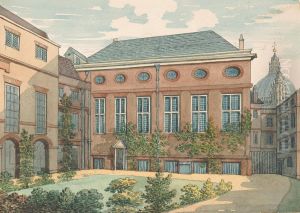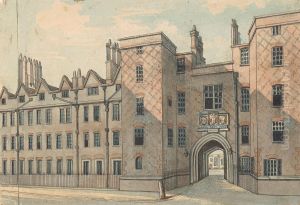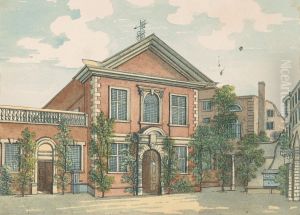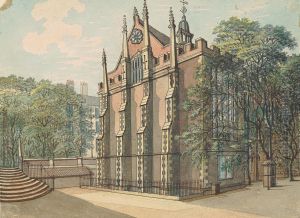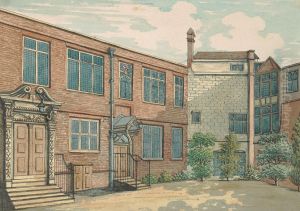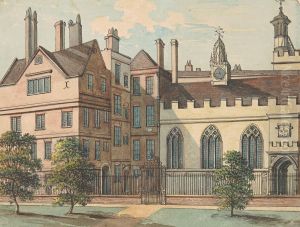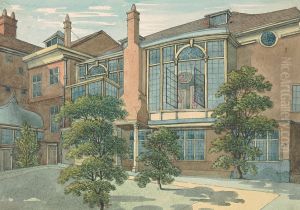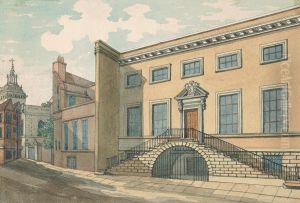Samuel Ireland Paintings
Samuel Ireland was an English author and engraver who is most renowned for his works as a topographical illustrator and for his role in the infamous Shakespearean forgery scandal involving his son, William-Henry Ireland. Born in 1744, Samuel Ireland developed a passion for art and literature early in his life. He was particularly interested in the picturesque and traveled extensively throughout Britain to collect sketches and drawings which he later published in a series of books celebrating the beauty of the British landscape and its historical monuments.
Ireland's publications, such as 'Picturesque Views on the River Thames' (1792), 'Picturesque Views on the River Medway' (1793), and 'Picturesque Views on the Upper, or Warwickshire Avon' (1795), were well-received for their detailed engravings and insightful commentary on the regions they depicted. He was adept at capturing the essence of the places he visited, and his books contributed to the growing interest in domestic travel and tourism in Britain.
However, Samuel Ireland's reputation was severely tarnished by the actions of his son. In the late 18th century, William-Henry Ireland claimed to have discovered documents and plays written by William Shakespeare. Samuel Ireland, believing in their authenticity, published them and even showcased them in his home, where they attracted much attention. It was not until 1796, when the supposed Shakespearean play 'Vortigern and Rowena' was performed and quickly revealed as a fraud, that the Irelands' deception was uncovered. Samuel Ireland was humiliated, and his credibility was damaged irreversibly.
Despite this scandal, Samuel Ireland continued to write and publish works on topographical and historical subjects. He passed away in 1800, but the legacy of his genuine contributions to the arts remains overshadowed by the notoriety of the Shakespeare forgeries. His life serves as a cautionary tale about the consequences of unfounded ambition and the importance of skepticism in the face of extraordinary claims.
